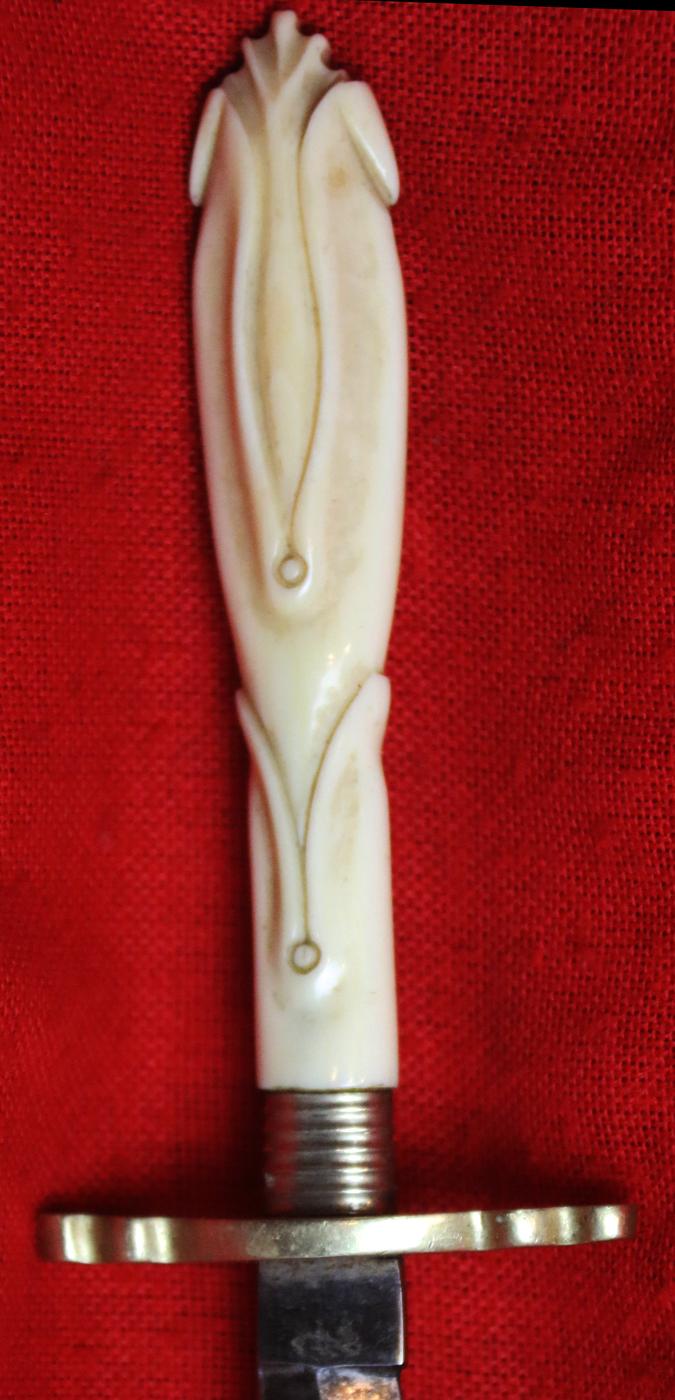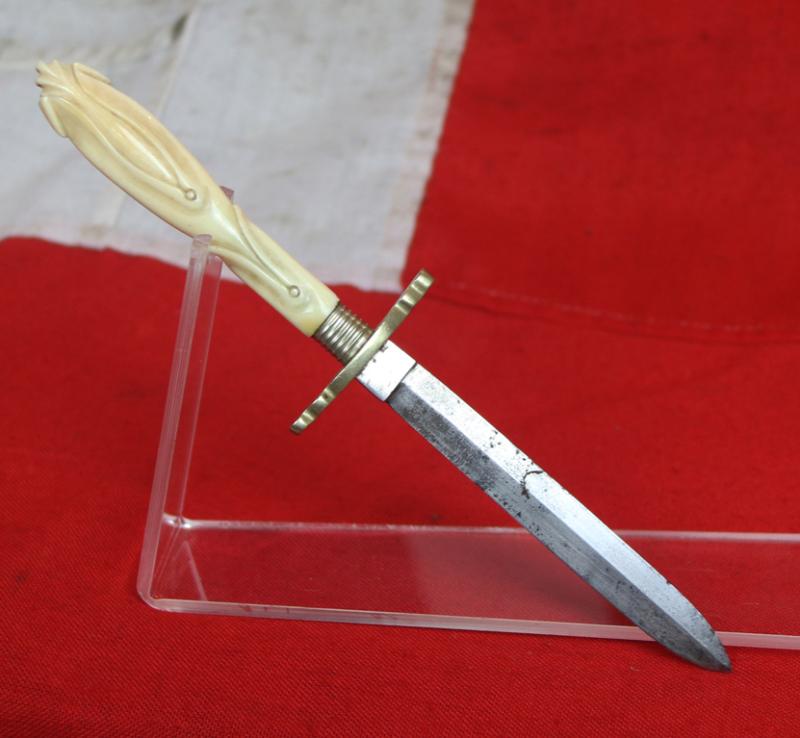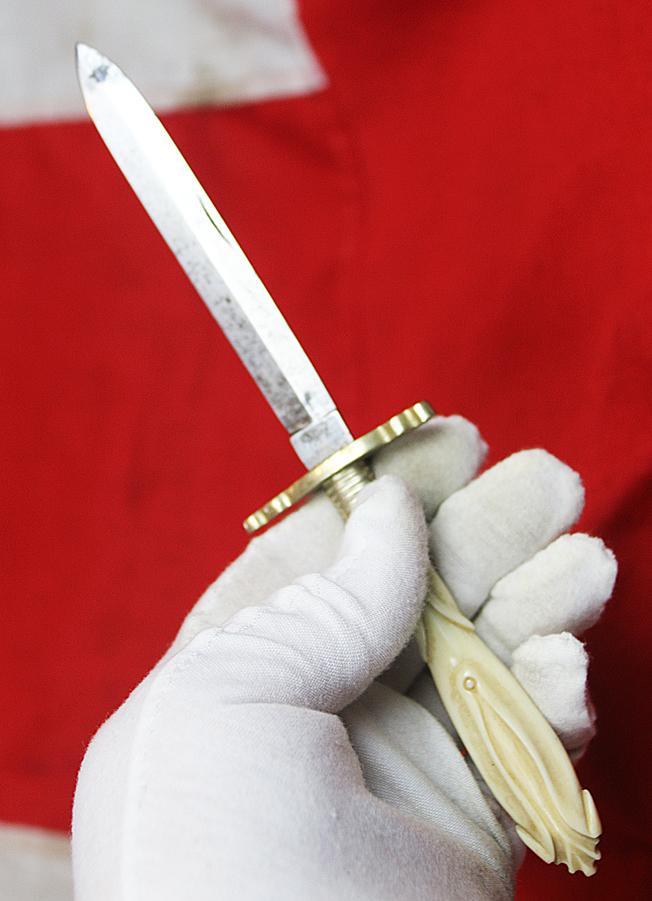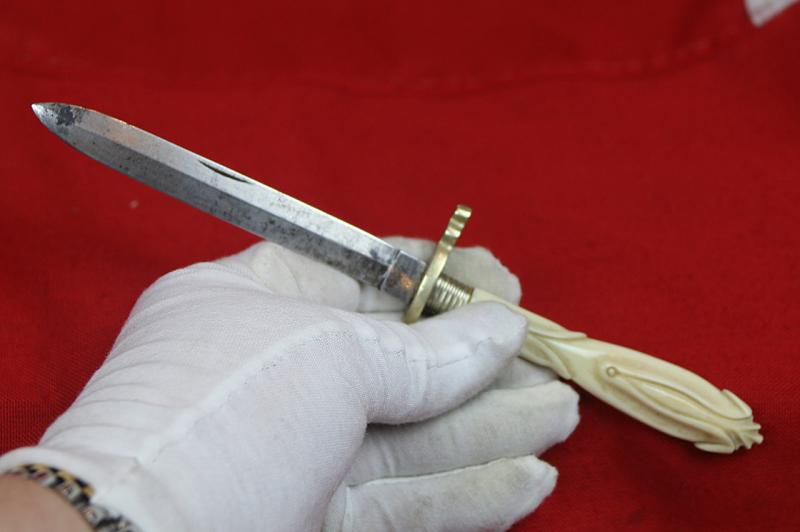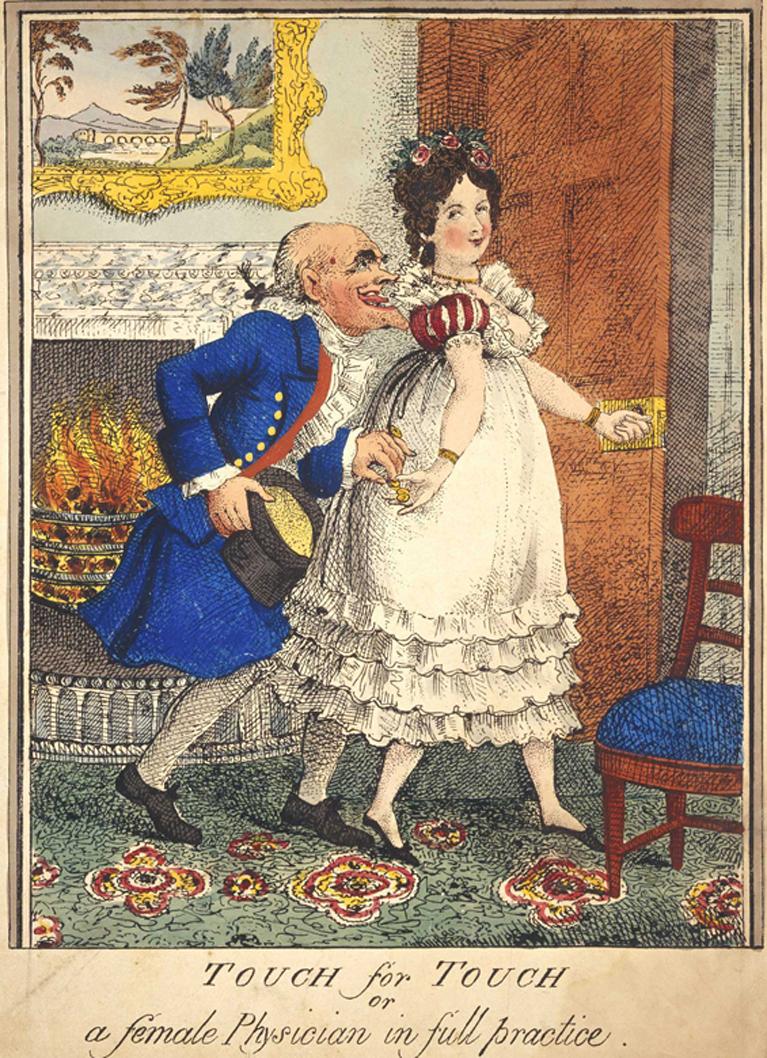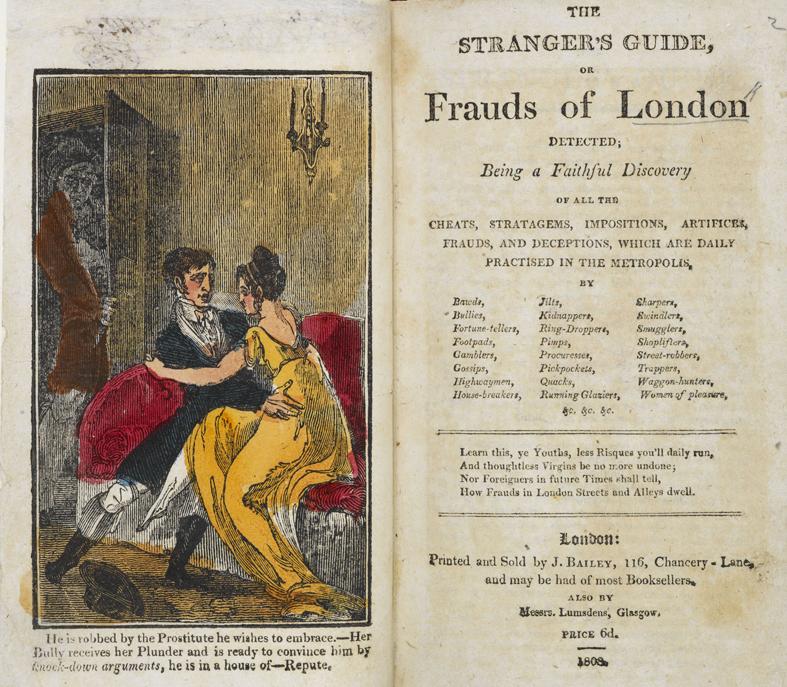A Victorian, Stilleto Style, So-Called Prostitute’s Dagger
With very attractive pressed ivorine handle made to simulate ivory. A prostitutes dagger was so called due to their attractiveness and useful size for concealment by unaccompanied ladies abroad after dark. Of course they would never have been sold as such by retailers, and the term has entered the vernacular of collectors probably even after the time they were actually made, however, like the term 'mortuary hilted swords' that bore the engraved visage of the king in the hilt from the English Civil War, they were never actually called that until almost 200 years later. They are attractively designed elegant daggers, just such as this one, with a slender and most efficient blade. Prostitution became a major concern and a focal point for social reformers in the 19th century. Concerns were seen everywhere including the literature of notables such as Charles Dickens. He created characters (some of which may have had real life versions) like Nancy in Oliver Twist, and Martha Endell in David Copperfield.
No one knows for certain, but there were somewhere between 8,000 and 80,000 prostitutes in London during the Victorian Age. It is generally accepted that most of these women found themselves in prostitution due to economic necessity.
There were three attitudes towards prostitution – condemnation, regulation, and reformation. Dickens adopted the last and was intimately involved in a house of reform called Urania Cottage. No scabbard Blade 4.25 inches, overall 8.25 inches long
Code: 24413
275.00 GBP


